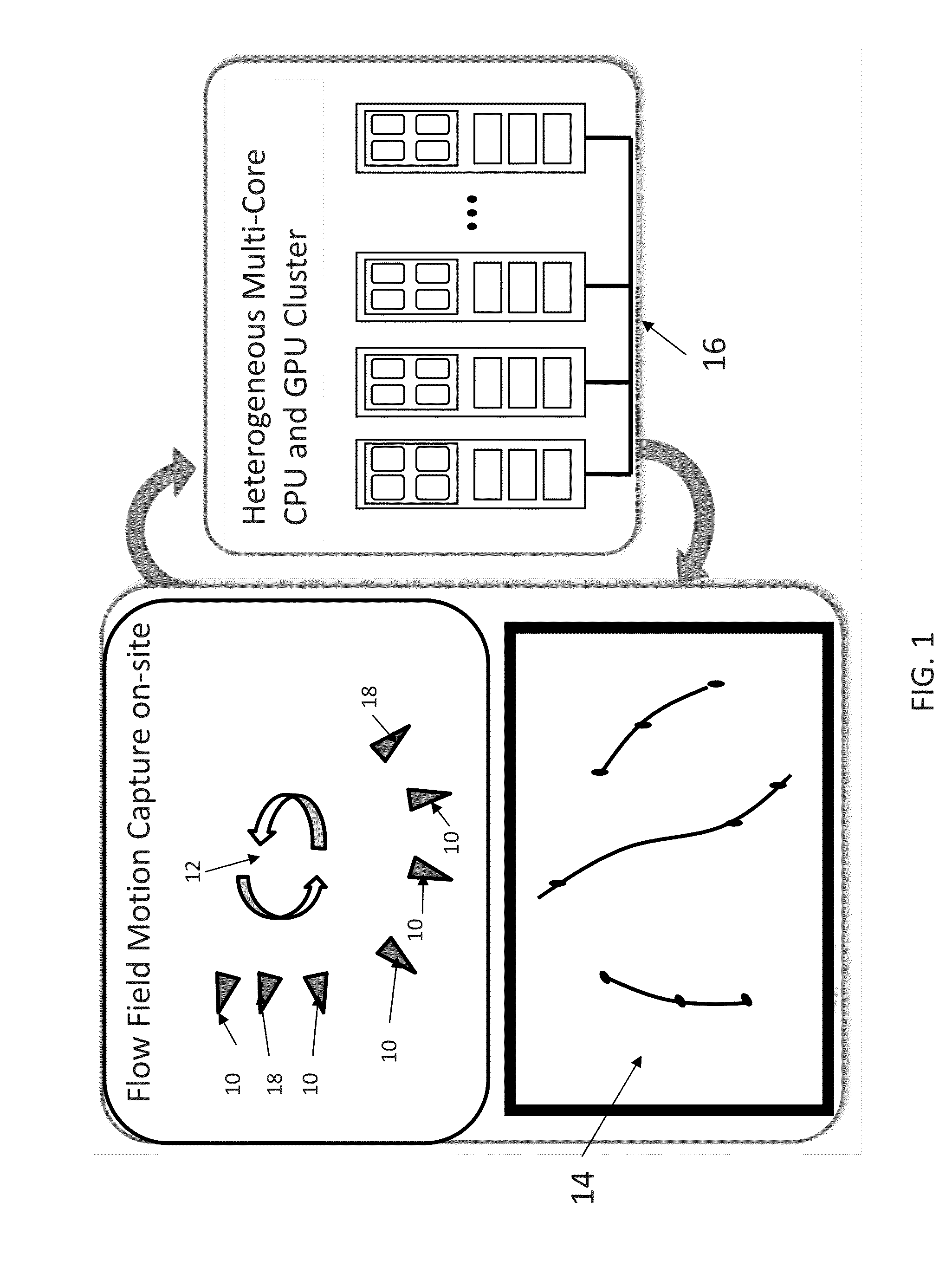Particle tracking system and method
a particle and tracking technology, applied in the field of particle tracking, can solve the problems of pipeline systems that can have critical failures after being constructed, unreliable results for complex fluid flows, and significant time and effort currently involved in making crucial fluid system design decisions, so as to increase the amount of particle travel, increase the frame rate, and increase the effect of observable volumes
- Summary
- Abstract
- Description
- Claims
- Application Information
AI Technical Summary
Benefits of technology
Problems solved by technology
Method used
Image
Examples
Embodiment Construction
[0053]Previous approaches to particle tracking measurement systems try to develop and use complex algorithms in an effort to address hardware limitations to gain resolution, reduce errors and uncertainty, and improve usability. Preferred embodiments of the invention integrate a plurality of technologies and provide a scalable system to obtain more data than necessary and efficiently identify and analyze data that is critical while also identifying data that is unreliable and / or unnecessary (data that is a poor indicator of particle identification) and that can be discarded in real time to avoid what would otherwise be an unrealistic data storage problem. Preferred embodiments leverage parallel computing paradigms, heterogeneous computing architectures, smart cameras, and open source programming tools to overcome the particle tracking limitations and provide a solution that is scalable.
[0054]Preferred embodiment systems of the invention use a scalable number of cameras that can excee...
PUM
 Login to View More
Login to View More Abstract
Description
Claims
Application Information
 Login to View More
Login to View More - R&D
- Intellectual Property
- Life Sciences
- Materials
- Tech Scout
- Unparalleled Data Quality
- Higher Quality Content
- 60% Fewer Hallucinations
Browse by: Latest US Patents, China's latest patents, Technical Efficacy Thesaurus, Application Domain, Technology Topic, Popular Technical Reports.
© 2025 PatSnap. All rights reserved.Legal|Privacy policy|Modern Slavery Act Transparency Statement|Sitemap|About US| Contact US: help@patsnap.com



